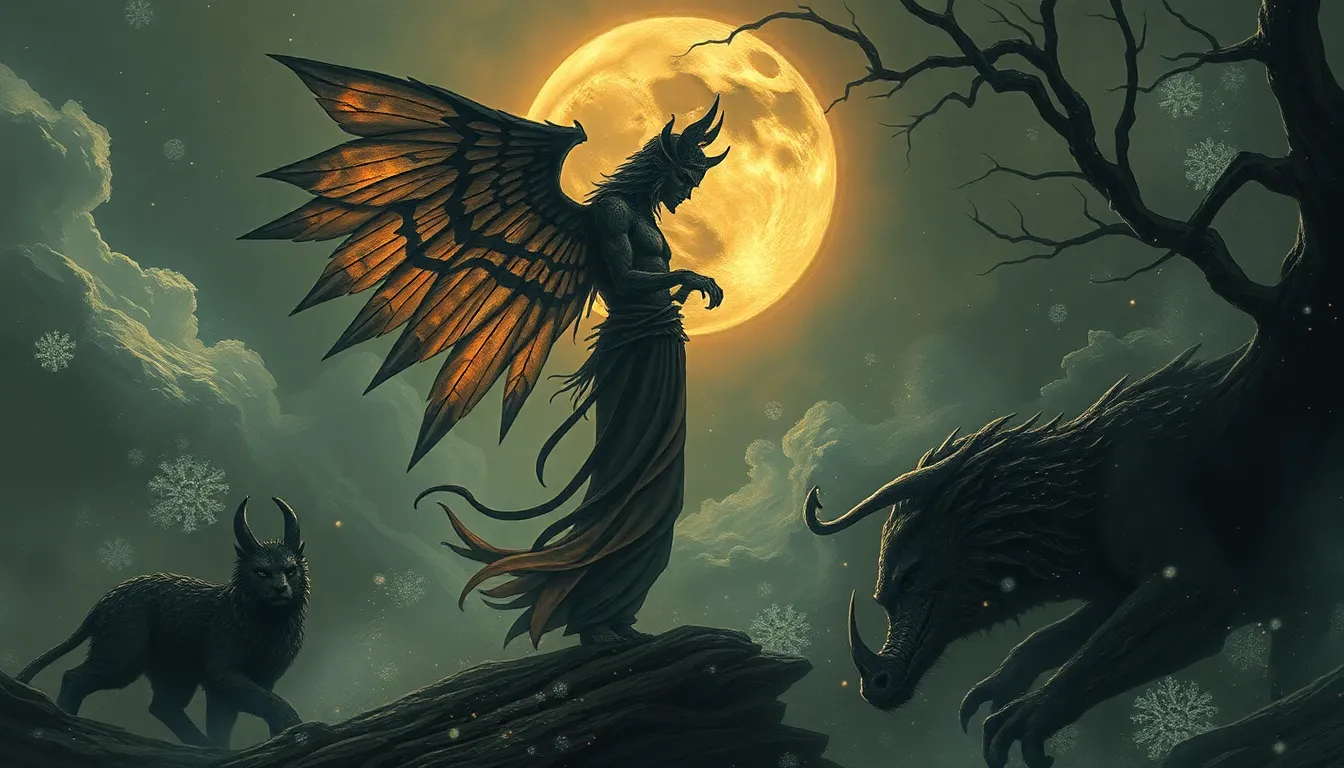The Thunderbird’s Song: Exploring the Musical Traditions of Indigenous Cultures
I. Introduction
The Thunderbird is a powerful cultural symbol found in various Indigenous cultures across North America. Often depicted as a giant bird capable of creating thunder and lightning, it represents strength, power, and a connection to the spiritual world. Music plays a vital role in Indigenous cultures, serving not only as an art form but also as a means of communication, storytelling, and ritual. In this article, we will explore the significance of music within Indigenous cultures, the diverse musical traditions that exist, and the way the Thunderbird is woven into these practices.
II. The Significance of Music in Indigenous Cultures
Music in Indigenous cultures is deeply intertwined with various aspects of life, including rituals, history, and spirituality. It serves multiple purposes:
- Role of music in rituals and ceremonies: Music is essential during ceremonies, such as weddings, funerals, and seasonal festivals. It is used to invoke spirits, celebrate community, and mark significant life events.
- Music as a means of storytelling and preserving history: Through songs, oral histories are transmitted from one generation to the next, preserving the knowledge and experiences of ancestors.
- Connection between music, nature, and spirituality: Many Indigenous songs reflect the relationship between people and the natural world, often incorporating sounds and themes from nature, emphasizing the spiritual connection to the land.
III. Diverse Musical Traditions Across Indigenous Cultures
Indigenous cultures across the continent showcase a rich tapestry of musical styles and traditions. Each culture has developed unique instruments and musical forms:
- Overview of various Indigenous cultures and their unique musical styles: For instance, the Plains tribes are known for their powwow music, while the Inuit have throat singing, which is a vocal game between two women.
- Specific instruments used in different cultures: Common instruments include:
- Drums: Used in nearly every Indigenous culture, they serve as the heartbeat of ceremonies.
- Flutes: Often made from local materials, flutes convey emotions and stories.
- Rattles: Used to accompany songs, they are often made from gourds or shells.
- Examples of traditional songs and their meanings: Songs often celebrate creation, nature, and community, with lyrics that reflect the values and beliefs of the culture.
IV. The Thunderbird in Indigenous Mythology
The Thunderbird occupies a significant place in the mythology of various Indigenous tribes. Its legends vary but often share common themes:
- Exploration of the Thunderbird legend across different tribes: Tribes such as the Ojibwe, Lakota, and Pacific Northwest cultures have unique interpretations of the Thunderbird, often viewing it as a protector.
- The Thunderbird’s representation in songs and chants: The Thunderbird is frequently referenced in songs that invoke its power, often during ceremonies seeking protection or guidance.
- How the Thunderbird’s imagery is woven into musical practices: The imagery of the Thunderbird is often depicted in the rhythms and melodies of traditional songs, symbolizing strength and resilience.
V. Contemporary Indigenous Music: Bridging Tradition and Modernity
Indigenous music has evolved over time, adapting to contemporary influences while maintaining its roots. This evolution reflects a dynamic cultural expression:
- Evolution of Indigenous music in contemporary settings: Many Indigenous musicians blend traditional sounds with modern genres, creating unique fusions that resonate with younger audiences.
- Prominent Indigenous musicians and their contributions: Artists like Buffy Sainte-Marie, Tanya Tagaq, and A Tribe Called Red have gained international acclaim, showcasing Indigenous music on global platforms.
- The impact of modern technology on Indigenous musical traditions: Technology has allowed for the preservation and sharing of Indigenous music, enabling artists to reach wider audiences while maintaining cultural significance.
VI. The Role of Music in Cultural Identity and Revitalization
Music serves as a vital element of cultural identity for Indigenous peoples, fostering community and belonging:
- How music fosters a sense of community and belonging: Community gatherings often center around music, where individuals unite to celebrate their heritage and identity.
- Efforts to preserve and revitalize Indigenous musical traditions: There are ongoing initiatives to teach traditional music to younger generations, ensuring the continuation of cultural practices.
- The role of music in Indigenous activism and social justice: Music has become a powerful tool for advocacy, with many artists using their platforms to address social issues affecting Indigenous communities.
VII. Challenges Facing Indigenous Musical Traditions
Despite the resilience of Indigenous musical traditions, challenges persist:
- The impact of colonization and globalization on traditional music: Many Indigenous cultures have faced pressures to assimilate, leading to the diminishing of traditional practices.
- Issues of appropriation and representation in the music industry: Indigenous artists often confront challenges related to cultural appropriation, where non-Indigenous artists exploit their music without understanding its significance.
- Strategies for preserving Indigenous musical heritage: Initiatives include cultural education programs, community workshops, and collaborations between Indigenous and non-Indigenous artists to foster respect and understanding.
VIII. Conclusion
In conclusion, the Thunderbird serves as a potent symbol within Indigenous cultures, reflecting the power of music as a vital form of cultural expression. Indigenous musical traditions offer a rich tapestry of sounds, stories, and spiritual connections that deserve recognition and support. As readers, we are encouraged to engage with and support Indigenous music, appreciating its role in cultural identity and revitalization. Ultimately, music remains a powerful connector, bridging generations and fostering understanding among diverse cultures.



